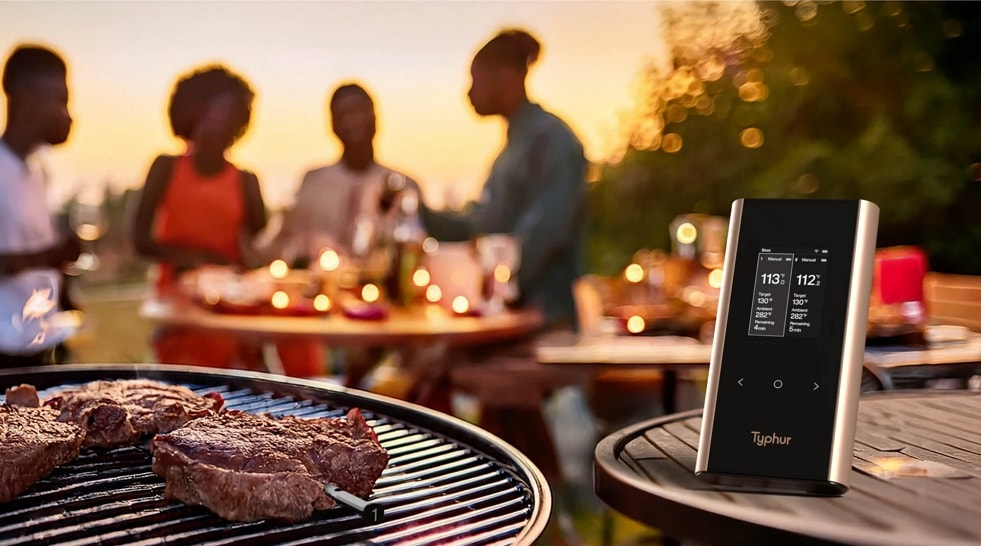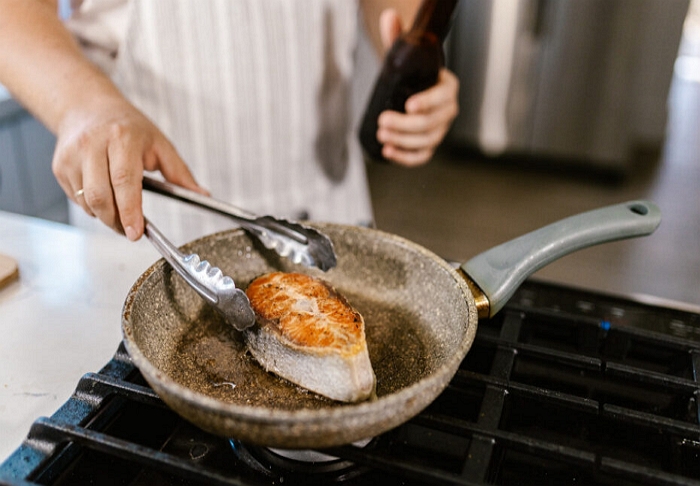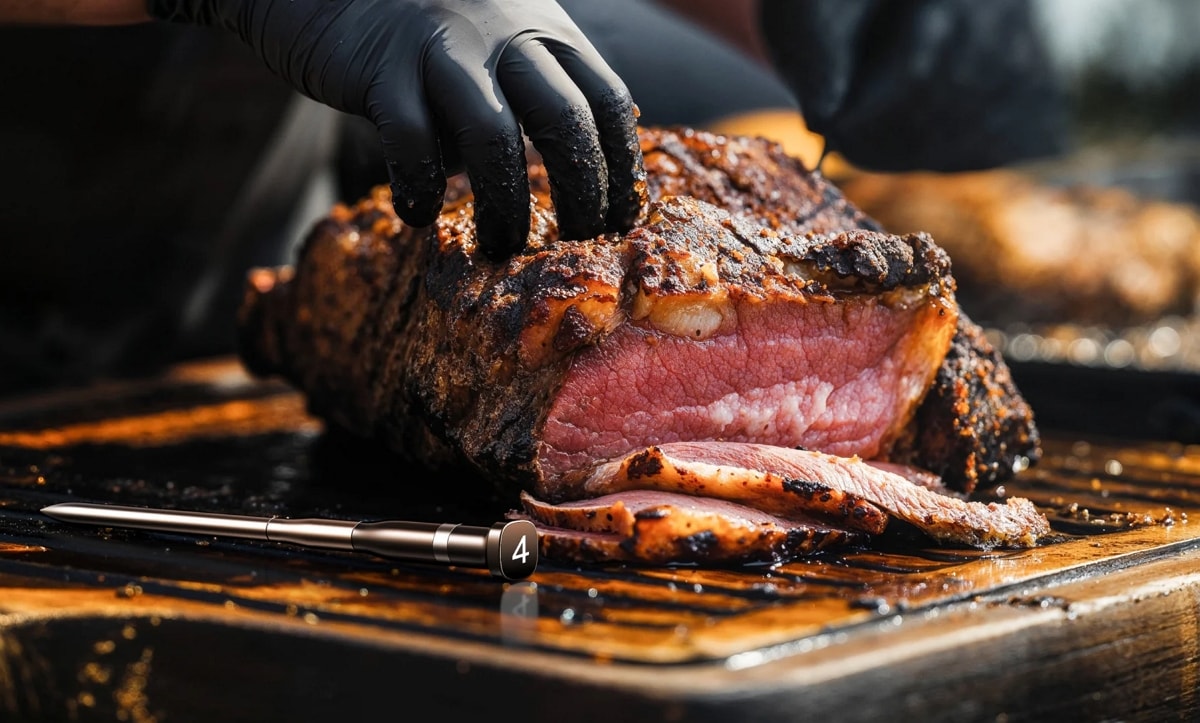Almost everyone has been in this situation. You take a piece of your steak, burger, or chicken, and suddenly, something doesn’t look right. Perhaps it is too red. Perhaps you feel that the texture is not right. Perhaps it looks strange when it comes to the liquids. At this moment, you start wondering if the food you are eating is safe. Knowing how to tell if the meat is bad or undercooked isn’t just about being able to cook well. It is also a matter of food safety for you and your family.

Undercooked meat can appear normal, yet it is capable of posing a great health risk. You need to know for sure if the meat is bad, how to take the temperature of the meat, and what to do if you are still doubtful. This guide will discuss the risks associated with eating undercooked meat, the ways to identify such meat, and the helpful tips you can take to ensure your safety.
Table of contents
Risks of Eating Undercooked Meat
It can make you sick. If you are able to identify meat that is not good, then you must also know the reason why undercooking poses a real threat.
Meat that is raw or not fully cooked has a chance of containing dangerous bacteria such as:
- Salmonella
- E. coli
- Listeria
- Campylobacter
These bacteria can cause the same diseases as undercooked meat, which range from stomach cramps to severe illness, if they manage to survive cooking. The effects of eating undercooked hamburger, undercooked beef, or undercooked ground turkey can be fast, especially if your immunity is weak.

What happens if you eat undercooked meat?
You may experience:
- nausea
- vomiting
- diarrhea
- fever
- stomach pain
Some people get mild symptoms, while others become severely ill. That is why being able to detect if the meat is bad and how to check its doneness is of utmost importance.
How to Identify Undercooked Meat
You can check meat doneness in different ways, but some methods work better than others. The following are the signs that could help you determine if meat is bad or undercooked.
1: Use a Meat Thermometer (The Most Reliable Method)
The easiest and safest way to check if your meat is cooked is to check the internal temperature with a wireless meat thermometer. Here are the safe temperature ranges:
- Poultry (including ground turkey or chicken): 165°F (74°C)
- Ground meats (like hamburger or pork): 160°F (71°C)
- Beef, lamb, veal (steaks, roasts, chops): 145°F (63°C) and rest for 3 minutes
- Pork (whole cuts): 145°F (63°C)
Insert the thermometer into the thickest part of the meat. Do not insert it into bone or fat. For larger cuts check at more than one spot. If the reading is below the safe range meat is undercooked and need more time.
Using a wireless thermometer could simplify this task. For this purpose, the Typhur Sync Gold Dual is considered as one of the best tools. It gives highly accurate readings with ±0.5°F precision, helped by two probes and six sensors in each probe. You can monitor more than one area simultaneously, so you can prevent undercooked meat from getting out of hand.

The Sync Gold Dual is designed for chefs who desire quick but reliable results. Simply insert the probe, set your desired temperature, and wait for the signal. You do not need to stand by the oven or grill. It works well for roasting, grilling, searing, and daily cooking. The probes are dishwasher-safe, which makes cleaning easy.

Long Range Wireless Meat Thermometer
2: Look for Visual Clues
You can often see signs of undercooked meat. Here is what to check:
- Color: Meat that is either raw or undercooked may appear pink, red, or gray inside. Cooked meat should look opaque or browned, though steak may stay a little pink and still be safe.
- Juices: If you notice clear juices when you cut the meat, it is probably cooked. If you see red or pink juices, it needs more time.
- Steam: When you open the meat, it should have steam coming off. If the inside is cool or just warm, then it is not ready.

3: Check the Smell and Texture
Your senses help you know how to know if meat is bad.
- Smell: The smell of fresh meat is mild. If the smell is sour, rotten, or strong in an unusual way, then it is not safe to eat.
- Texture: Cooked meat has a firm but tender feeling. Undercooked meat feels soft, mushy, or slippery.
If the meat appears, smells, or feels off, do not eat it.
What to Do if Meat is Undercooked
You may cut into your meat and see that it is still pink inside. You can fix it safely with these steps:
1. Stop Eating Right Away
If you spot any raw hamburger or chicken, then do not eat any further. Just a bit of that can get you bacteria and other microorganisms.
2. Refrigerate Quickly
If you are unable to cook it again very soon, the meat should be refrigerated within two hours max. This will make bacteria to grow very slowly.
3. Reheat Thoroughly
When you are going to cook again, put the meat in the oven or on the stovetop and heat it through. Achieve the safe internal temperature specific to that type of meat. Do not microwave it as it cooks unevenly and might leave some parts cold.
4. Use a Thermometer Again
Always rely on your thermometer one more time before having your meal. If there is any undercooked ground beef or undercooked ground turkey, careful reheating is extremely important because bacteria can move from the surface to the inside of the meat.
How to Prevent Undercooked Meat
It is a lot easier to keep meat from being undercooked than to remediate it later. Below are simple methods to keep your meals safe.
Use a Meat Thermometer Every Time
A thermometer removes guesswork. Place it in the thickest part of the meat, away from bone and fat. This tool solves most issues related to undercooked meat, undercooked hamburger, and other risky foods. The Typhur Sync Gold Dual makes this even easier. It provides precise readings and allows you to check the temperature from any place in your house, so the moment the meat attains a safe level you will not miss it.

Rest the Meat Before Cutting
Allowing meat to rest reduces the temperature difference and promotes the distribution of juices throughout the meat mass. Besides, it also contributes to the evenness of the meat cooking.
Follow Cooking Guidelines
Each type of meat requires different cooking times and temperatures. Until you memorize them, it is good to keep a simple chart nearby.
Be Careful with Ground Meats
The process of grinding meat distributes bacteria all over the meat. Consequently, the risks associated with eating raw ground beef and raw ground turkey are heightened. It is advisable to always finish cooking them completely.
Store Meat Properly
Meat that has gone bad can sometimes be mistaken for undercooked meat. If you learn how to identify bad meat before cooking, you will be able to prevent problems from occurring at an early stage.
FAQs About Undercooked Meat
You may become ill from bacteria such as Salmonella or E. coli. These symptoms can vary from mild to severe. This is the reason why it is very important to be able to recognize bad meat.
NO for ground meat and poultry, and it depends on the temperature for whole cuts like steak. When in doubt, just cook it more.
A slight pinkish color can be normal, especially in beef or lamb, depending on the cooking method. Nevertheless, color is not a reliable indicator of safety. Use temperature as your guide. Even if your pork chop is still somewhat pink, if it has reached 145°F (63°C) and rested, it is safe to eat. However, if the chicken or ground turkey looks pink, do not take the risk – cook it longer.
Final Thoughts
Knowing whether meat is bad or undercooked puts you in a confident and safe cooking position. A thermometer will keep you away from underdone beef, underdone hamburger, and underdone ground turkey. Moreover, your nose and your eyes and your fingers can help you in the same way with smell, color, and texture.
Safety in meat cooking is not a complicated matter. By adopting a few simple practices—checking temperature, observing juices, and properly storing meat—you can completely avoid the risk of undercooked meat diseases and enjoy every meal with peace of mind. If you take these measures and rely on your equipment, you will always be able to tell if meat is bad before it turns into a problem.




